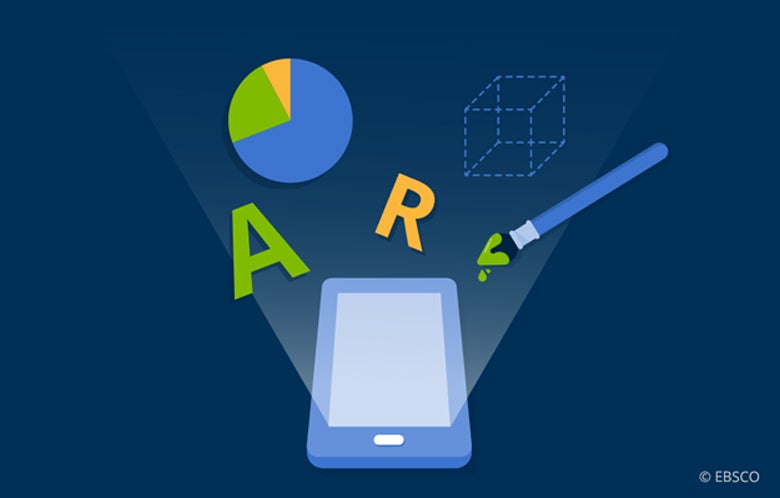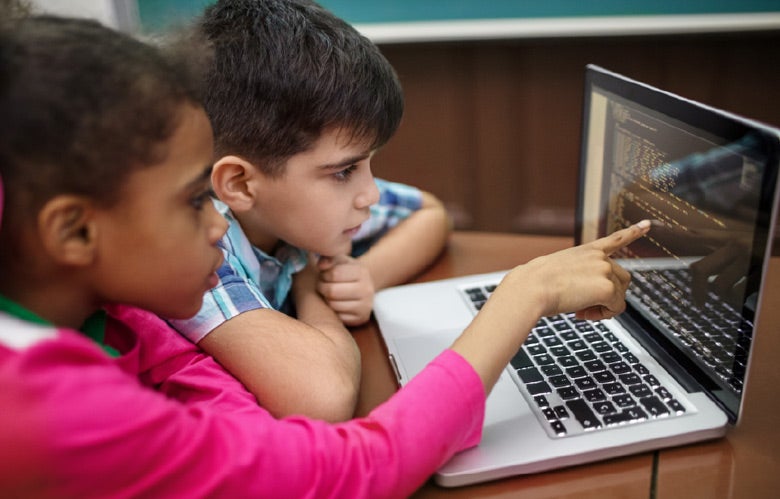When the coronavirus pandemic forced schools to adopt remote learning models and library programs moved online, many librarians found themselves seeking new and inventive ways to deliver curriculum and engage their users. Although games are not new to the pedagogical toolbox, gamification and game-based learning have become increasingly valuable in digital learning environments.
Gamification and game-based learning are often conflated. Both strategies combine games and learning, but they differ in the way the game elements are integrated into the learning experience. Gamification introduces game elements primarily to reward participants. Online gamification tools include point systems, quizzes, leaderboards and digital badges.
On the other hand, game-based learning uses game elements to help students learn new content and practice new skills in a risk-free setting. Game-based learning experiences ― such as virtual escape rooms and role-play activities ― can promote a deeper understanding of concepts such as productive struggle. Game-based learning encourages students to become self-directed critical thinkers and problem solvers. When students work in teams, they learn about cooperation, negotiation, persistence and other important life skills.
Both gamified and game-based learning provide immediate, informative feedback and can help students develop positive attitudes toward school. “When teachers gamify learning, students are given a greater sense of agency,” writes Sam Northern in Knowledge Quest. “They become actors with a very important role. Their actions lead to desired outcomes.”
Gamification and game-based learning can be employed in a variety of subjects. In the STEM disciplines, games can be used to promote spatial reasoning, math and logic. They can also stimulate “curiosity, socialization, and the continuous processing of information” (American Library Association). In addition, librarians can create games to support information literacy instruction. For example, Factitious presents players with news headlines from various sources and asks whether they are real or fake. Players earn points for each correct guess. In another example, this plagiarism game from Lycoming College is a fun way to reinforce the proper citation of sources.
Educators looking to integrate either strategy into their instruction can build engaging activities with the following tools:
Interactive Quizzes / Class Response Systems
Teacher-librarians can gamify information literacy instruction using free interactive quiz-making tools such as Kahoot!, Quizziz and Socrative. Each tool enables teachers to create surveys, questionnaires and discussion prompts. Kahoot! functions like a quiz show where participants earn points for how quickly they answer questions correctly. Meanwhile, Quizziz lets students take teacher-created quizzes at their own pace ― in class or at home. Socrative allows teachers to align quiz questions to curriculum standards and offers an “Exit Ticket” mode that helps educators check student understanding. These fun and engaging platforms not only motivate students to participate, but they also allow educators to see instantly which concepts students have mastered and which need further reinforcement.
Digital Badges
Digital badges can be used to incentivize learning in schools, colleges and libraries. These digital credentials serve as a form of currency that can chart student growth or recognize their achievements. Digital badges are similar in concept to scouting badges; however, rather than being sewn on a vest or sash, digital badges exist online. Digital badges can be used to reward students for completing summer reading assignments and demonstrating mastery of information literacy skills. Classcraft offers educators five helpful steps for creating a digital badging program in classrooms.
Virtual Escape Rooms
Following the success of Pennsylvania librarian Sydney Krawiec’s Harry Potter-themed game, virtual escape rooms have emerged as popular activities for entertaining students (and adults) learning from home and as devices for staff development and team building. The virtual escape room takes the traditional scavenger hunt activity to the next level by adding a storytelling component. Students are invited on a mission or quest and are presented with clues to help them achieve the game’s objective while being guided by an immersive narrative.
Librarians can use escape room activities to teach information literacy or familiarize students with library databases. (For example, to help students in grades five through eight practice searching in Explora, EBSCO created this multidisciplinary escape room activity.) Meredith Dobbs, founder and creator of TeachWriting.org, shares tips for creating a digital escape room using Google Forms. Teacher Jenna Copper suggests using backwards design in creating escape rooms for high-school students.
Coding Clubs
Coding has been a trending digital literacy topic ever since former President Barack Obama launched Computer Science for All, an initiative aiming to provide opportunities for K-12 students to learn computer science and develop the computational thinking skills needed to pursue careers in technology. Since the number of jobs for software developers is expected to grow 22 percent by 2029 (much faster than the average), libraries that provide students with coding education empower them to become digital content creators.



